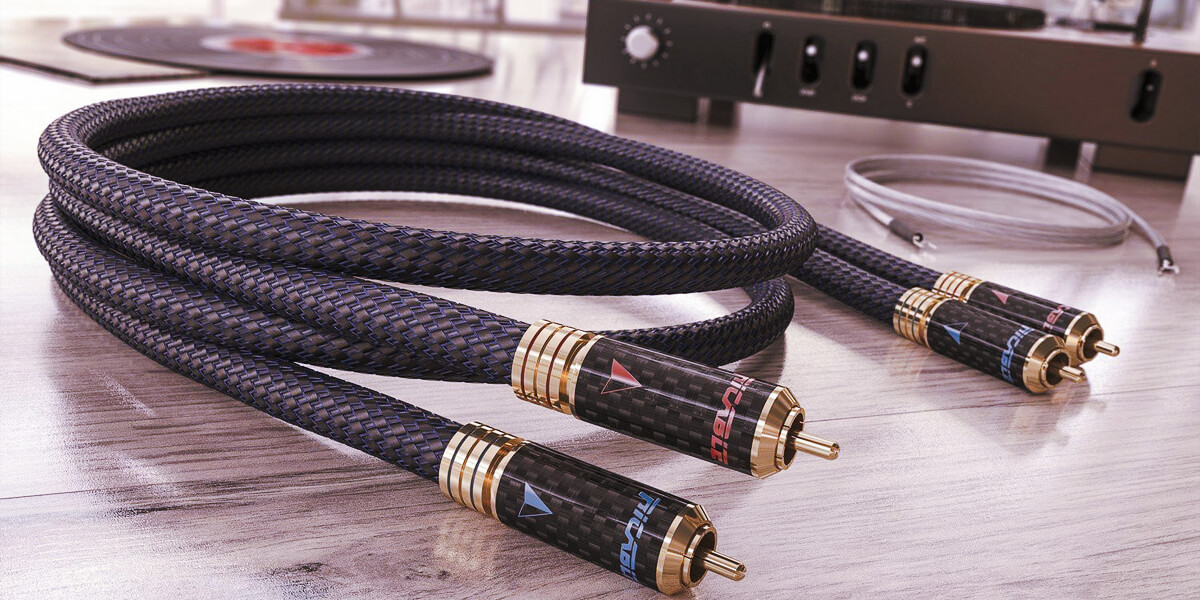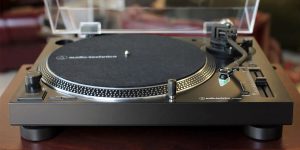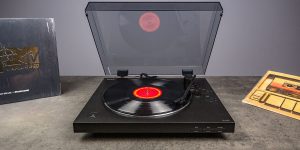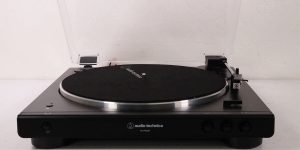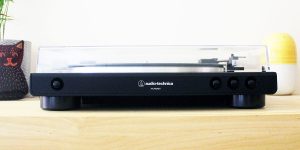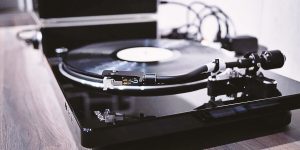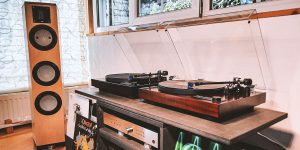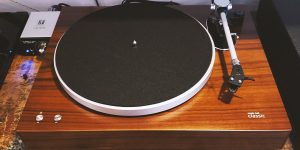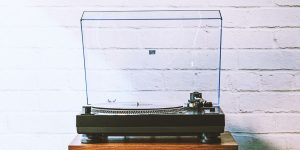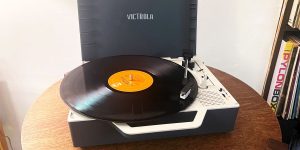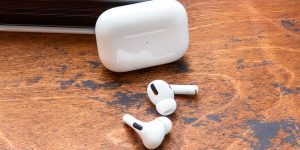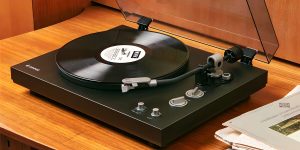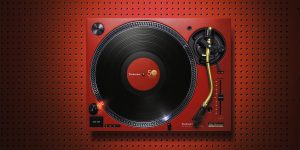Have you ever wondered why your vinyl records don’t sound quite as good as they could? Or perhaps you’re setting up your first turntable and want to make sure you’re off to a great start? Choosing the right audio cables for turntable setup can have a significant impact on sound quality. And I’m here to help you navigate this often overlooked aspect of your audio system.
In this article, I’ll discuss the importance of high-quality turntable cables and share my insights on how to choose the ideal ones for your setup.
Types of turntable cables
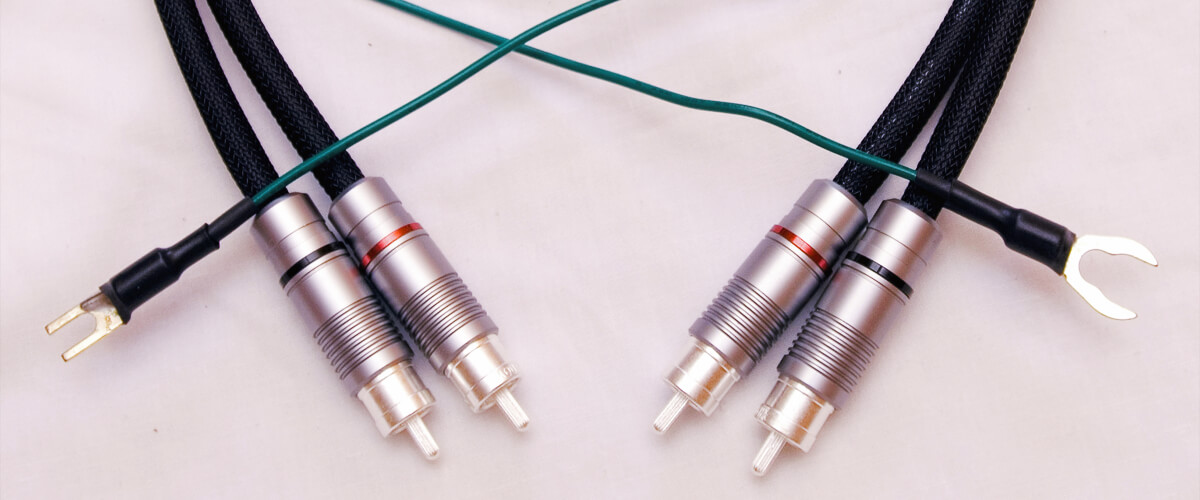
RCA cables
RCA cables are the most common type of cables used in turntable setups. They consist of two connectors: one for the left audio channel and one for the right. These cables transmit the audio signal from your turntable to your preamp, amplifier, or speakers.
A wide range of RCA phono cables is available, from standard to high-end and audiophile-grade. While pricier cables can offer better materials and construction, consider your overall setup and budget. For example, investing in expensive cables might not be necessary if your turntable or speakers are entry-level. However, it’s worth exploring better cables to improve sound clarity and detail if you have a high-quality system.
XLR cables
XLR cables are a balanced alternative to RCA cables and are typically used in professional audio setups. They consist of three pins, providing a balanced signal path that reduces noise and interference.
When comparing XLR cables to RCA cables, the main advantage is their noise-reduction capabilities. However, not all turntables or audio components have XLR inputs, and they can be more expensive than their RCA counterparts. Therefore, before considering XLR cables, ensure your turntable and other components are compatible with this connection type.
USB cables
USB cables are used in turntable setups for digital recording and playback. They enable you to connect your turntable directly to your computer, allowing you to digitize your vinyl records or use your turntable as a playback device.
The quality of your USB phono cable for the turntable defines the quality of digital recordings. A well-constructed cable with proper shielding will minimize data loss and interference, ensuring the accurate reproduction of your vinyl collection. While you don’t need to break the bank on a USB cable, opting for a decent-quality cable can make a noticeable difference in your digital audio experience.
How to choose the right turntable cable?

Cable length and connection type
These two aspects can impact sound quality and overall performance. In my experience, using the shortest possible cable for your setup can minimize signal loss and interference. However, I recommend you find a balance between cable length and the practicality of your audio system’s layout.
Consider your turntable’s output and audio components’ input when selecting a connection type. Because for example, you will want the preamp input cable you buy to fit both your devices — a turntable and a preamp. RCA connections are the most common, but XLR or USB connections may be applicable depending on your specific needs.
Cable quality and materials
Believe me or not, the quality and materials of your turntable cable can significantly change your entire listening experience. High-quality cables often have better shielding and construction, which reduces interference and provides a cleaner audio signal.
So, common materials for turntable interconnects include copper, silver, and gold-plated. Copper is the most frequently used material, offering a good balance of conductivity and affordability. Silver cables are more expensive but can provide better signal transmission, potentially enhancing audio clarity. Gold-plated connectors are not necessarily better in terms of conductivity, but they are corrosion-resistant and provide a reliable connection over time.
Here is a handy tip. When choosing a cable, consider your budget and the overall quality of your audio system. Then, find a cable that complements your setup without overextending your resources. Remember, the right cable can elevate your vinyl listening experience, but if it is not selected correctly, it is likely to have a negative effect on the overall listening experience.
Maintaining and troubleshooting your turntable cables

Why proper maintenance of turntable cables is important
Of course, it’s all about your time. But here is the thing — taking care of your turntable cables ensures the longevity and optimal performance of your audio system. Proper maintenance helps preserve the integrity of the cables, preventing signal degradation and reducing the risk of potential issues down the road.
By dedicating time to regular cable maintenance, you’re safeguarding your investment and enhancing your overall listening experience. In addition, a well-maintained cable will provide a cleaner, more consistent audio signal, ensuring that your vinyl records sound as intended.
The best practices for storing, cleaning, and protecting your turntable cables
Not everything I was doing regarding storing and maintaining my phono wires was the right thing. Now I understand that some steps significantly decreased the lifespan of my cables. But I can at least spare you from mistakes. So here are the tips that will help you take care of your cables safely.
- When storing your cables, avoid coiling them too tightly. This can cause stress on the cable’s internal structure, leading to signal degradation over time. Instead, loosely coil the cables or use a figure-eight pattern to minimize stress.
- Store your cables in a cool, dry place away from direct sunlight, heat sources, and moisture. These elements can deteriorate the cable’s materials and reduce the overall lifespan.
- Over time, connectors can accumulate dust and grime, affecting the quality of the audio signal. To clean the connectors, use a soft cloth or cotton swab dipped in isopropyl alcohol, gently wiping away any debris. Make sure to let the connectors dry completely before reconnecting them.
- Ensure that your cables are firmly connected to your turntable and other audio components. Loose connections can lead to signal loss and intermittent audio issues.
- Keep your cables neatly organized and separated from power cords to minimize interference. Use cable ties or velcro straps to bundle cables together and maintain a tidy setup.
Common problems that can occur with turntable cables
Even with proper maintenance, turntable cables may still experience issues over time. Here are some common problems you may encounter and how to address them.
| Problem | Reason | How to Fix |
|---|---|---|
| Hum or Buzzing | Ground loop or insufficient shielding | Ensure the turntable is properly grounded; upgrade to better-shielded cables if necessary |
| Intermittent Sound | Loose or corroded connections | Inspect connectors for corrosion; ensure secure connections between audio components |
| Channel Imbalance | A damaged cable or poor connection | Swap left and right connectors to determine the issue; replace the cable or address the connection issue if needed |
| Distorted Sound | Damaged or pinched cable | Inspect the cable for physical damage; replace the cable if necessary |
| No Sound | Broken or disconnected cable | Check that cables are securely connected; test with a different cable to determine if the issue lies with the cable itself |
FAQ
Are more expensive cables always better than cheaper ones?
While more expensive cables often use higher-quality materials and construction, they are not always better than their cheaper counterparts. The key lies in finding a cable that complements your audio system without overspending. In some cases, the difference in sound quality between a high-end cable and a more affordable one may not be as significant as the price difference suggests, especially if your turntable or speakers are entry-level. So, consider your overall setup and budget when choosing cables to ensure you’re getting the best value for your money.
Can using the wrong type of cable damage my turntable or other audio equipment?
Using the wrong type of cable can cause compatibility issues. And in some cases, damage your turntable or other audio equipment. For example, if you try to force a connection that doesn’t fit or use a cable not designed for audio signals, you risk damaging the connectors or introducing noise and interference into your audio system. Always ensure you use the appropriate cable type for your specific setup to avoid potential issues.
What is the difference between a phono cable and a turntable interconnect?
A phono cable and a turntable interconnect are essentially the same thing. Both terms refer to the cable that connects your turntable to a phono preamp, integrated amplifier, or receiver. These cables transmit the audio signal from your turntable’s phono cartridge to the rest of your audio system. The term “phono cable” typically refers to the cable’s purpose of carrying the phono signal, while “turntable interconnect” emphasizes the cable’s role in connecting the turntable to other audio components.
Can using a different brand of cable affect the sound quality of my turntable setup?
The brand of cable you choose can have an impact on the sound quality of your turntable setup. Different brands may use various materials, construction techniques, and shielding methods, which can influence the cable’s ability to transmit audio signals without degradation or interference. However, I want to note that the difference in sound quality between brands may not always be noticeable. So, rather than focusing solely on the brand, prioritize finding a cable that meets your specific needs and complements your turntable setup.

